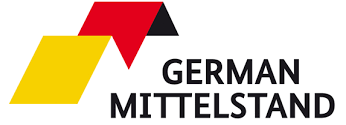OpenGL (Open Graphics Library)
OpenGL (Open Graphics Library) is a cross-platform graphics API (Application Programming Interface) designed for working with 2D and 3D graphics. It is used for rendering 3D scenes, modeling, animation, and visualization in games, engineering systems, and scientific applications.
What is OpenGL
OpenGL stands for Open Graphics Library. It is an open standard that provides developers with a unified set of functions for interacting with graphics hardware, regardless of the operating system or GPU manufacturer.
Originally developed by Silicon Graphics (SGI) in 1992, OpenGL has become a foundation for many graphical applications. It is supported across Windows, Linux, macOS, Android, and other platforms, making it a truly cross-platform development tool.
How OpenGL Works
OpenGL operates on a client–server model: an application (the client) sends rendering commands to the graphics subsystem (the server), which executes the rendering process.
Main stages of operation:
- The application defines the geometry of the scene (points, lines, polygons).
- OpenGL processes this data, applying shaders, textures, and lighting effects.
- The final image is rasterized and displayed on the screen.
For programmable graphics, OpenGL uses shaders written in GLSL (OpenGL Shading Language). These allow developers to implement advanced visual effects such as lighting, reflections, transparency, and post-processing.
Unlike DirectX, OpenGL is platform-independent and vendor-neutral, with open support from major GPU manufacturers like NVIDIA, AMD, and Intel.
Use Cases
OpenGL is widely used in:
- Video games – rendering 2D and 3D graphics on PCs and consoles;
- Scientific visualization – modeling, simulation, and data analysis;
- Engineering systems (CAD/CAM) – 3D design and visualization;
- Mobile and AR/VR applications – via the simplified version OpenGL ES;
- Web graphics – as the foundation for WebGL, used in browsers.
Because of its flexibility and openness, OpenGL remains a key standard in visual computing and computer graphics education.
Advantages
Key advantages of OpenGL include:
- Cross-platform compatibility – works across major operating systems and devices;
- Open standard – free to use without licensing restrictions;
- Hardware support – compatible with most GPUs and drivers;
- Scalability – suitable for everything from basic 2D games to photorealistic 3D rendering.
OpenGL’s longevity and active community ensure extensive documentation, learning resources, and development libraries are readily available.
Frequently Asked Questions (FAQ)
OpenGL is an open and cross-platform standard, while DirectX is a proprietary Microsoft technology that runs only on Windows and Xbox. OpenGL is used on a wider range of systems, while DirectX is more common in commercial games optimized for Windows environments.
Shaders are small programs that run on the GPU and control how graphics are rendered on screen. They enable visual effects such as lighting, shadows, reflections, realistic materials, and post-processing in real time.
OpenGL is employed in game engines, CAD tools, augmented reality applications, and browser-based graphics via WebGL. It’s also widely used in scientific visualization and education due to its simplicity and universality.
Although newer APIs like Vulkan, DirectX 12, and Metal have emerged, OpenGL remains widely used. It is stable, well-supported, and ideal for educational, industrial, and cross-platform projects where compatibility and ease of development are priorities.






